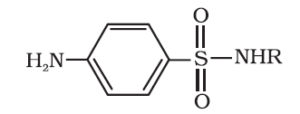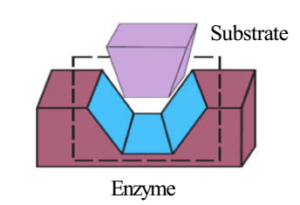Science > Chemistry > Everyday Chemistry > Mechanism of Action of Drug
In this article, we shall study the meaning of the term drug, and the mechanism of actions of drugs.
Drugs:
The word dug is derived from a French word drogue which means a dry herb. Drugs are chemicals of low molecular mass which interact with macromolecular targets and produce a biological response. Drugs may be a single chemical substance or a combination of two or more different substances. Example: Aspirin, Naproxen
Medicine:
When the biological response of a drug is therapeutic and useful, the drugs are called medicines. Medicine is defined as a chemical substance which is used for the purpose of diagnosis, prevention, cure or relief of disease and for reducing sufferings from pain.
Chemotherapy:
The term chemotherapy was coined by Paul Ehrlich. Paul Ehrlich is known as the father of modern chemotherapy. Chemotherapy is a specific treatment of a disease by the administration of chemical compounds used as medicines. The chemicals so used for the cure are called chemotherapeutic agents.
Characteristics of Ideal Drug:
- It should destroy disease-causing organisms without harming the human body.
- It should not disturb physiological processes in the human body.
- It should not injure host tissues.
- It should have minimum side effects.
- It should be localized to the affected site and should not interfere with the working of other parts.
- The cells should not acquire resistance to the drug after some time.
Methods of Administration of a Drug:
- Oral: tablets, syrups, mixtures administered through the mouth.
- Intravenous: injected directly into the bloodstream.
- Intramuscular: injection in muscles
- Subcutaneous: injection under the skin
- Nasal: inhalation of a drug.
- Topical: local application e.g. oils, ointments.
Classification of Drugs:
Need for Classification of Drugs:
- It helps to select a proper drug for the treatment of a disease.
- It helps in studying the drug and to do research to overcome the side effects of the drug.
- It also helps in the development of new drugs.
- It helps for pharmacists to design a drug most effective for a particular receptive site.
Classification Based on Pharmacological Effects:
This classification of drugs is based on the choice of drug and its pharmacological effect. This classification gives a whole range of drugs available for the treatment of a particular type of health disorder. Hence this classification is useful for doctors. Examples:
- Analgesics: Painkilling effect
- Antibiotics: To arrest the growth and kill bacteria
- Antiseptics: To arrest the growth and kill bacteria
- Tranquilizers: To reduce mental stress
Classification Based on the Action of Drugs:
These drugs are diseases oriented and have a different biological mode. Examples: painkillers, antiarthritic, antihistamines medicines. All antihistamines inhibit the (stops) action of the compound histamine which produces allergic reactions such as inflammation in the body.
Classification Based on Chemical Structure:
This classification of drugs is based on the assumption that drugs having similar chemical structures are expected to have similar pharmacological properties. Examples: All sulphonamides having a similar type of chemical structure show antibacterial activity.

Classification Based on Molecular Targets:
Drugs interact with biomolecules like carbohydrates, proteins, lipids, nucleic acids, etc. These are target molecules and the drugs are called target-oriented drugs. This classification is useful for medicinal chemists. Examples: Many enzymes and receptors in cells have molecular targets.
Classification of Drugs by Lay Public:
This is not a scientific classification but commonly used by the lay public. This classification is based on the action of the drug and not on the chemistry of a drug or biological action of the drug. Examples: Cough syrups, analgesics, laxatives, and purgatives.
Designing of a Drug:
Drug target and drug metabolism are the two main aspects considered during drug design. Knowledge of drug target and drug metabolism helps medicine chemists to develop new and improved drugs.
Drug Target:
Drugs interact with biomolecules like carbohydrates, proteins, lipids, nucleic acids, etc. These molecules are called target molecules. To obtain a desired therapeutic result the correct choice of a target for a drug is to be done. The site on which the drug acts is called receptor. Usually a protein or proteinaceous material acts as a receptor.
Drug Metabolism:
A drug travels through the human system in order to reach the target. So the drug should be designed in such a way that it reaches the target without being metabolized in between (i.e. site of administration to site of action). After the action of the drug at the receptor site, the side products of the drug (metabolites) should be excreted without causing harm to the body.
After considering the above points a drug is designed from such compounds which are called lead compounds and chosen as starting points for drug designing. Lead compounds may be obtained from natural sources like plants, trees, venoms and metabolites of organisms or they may be synthesized.
Drug-Target Interaction:
Drugs interact with biomolecules like carbohydrates, proteins, lipids, nucleic acids, etc. These molecules are called target molecules. Biomolecular macromolecules perform the following functions.
- The proteins which perform the role of biological catalysts in the body are called enzymes.
- Proteins which are crucial to the communication system in a body are called receptors.
- Proteins which carry polar molecules across the cell membrane are called carrier proteins.
- Nucleic acids have coded genetic information for the cell and lipids.
- Carbohydrates are the structural part of the cell membrane.
Enzymes as Drug Targets:
The enzymes are biological catalysts. They provide active sites which hold the substrate molecule in a suitable position so that it can be attacked by the reagent effectively. The substrate binds to amino acids of the protein present on active site through interactions like ionic bonding, hydrogen bonding, van der Waals’ interaction or dipole-dipole interaction.

Enzyme provides functional groups that will attack the substrate and carry out a chemical reaction. Drugs inhibit the action of enzymes. Such drugs are called enzyme inhibitors. Thus enzyme inhibitors block the binding site and prevent binding of substrate. They also inhibit the catalytic action of enzymes.
Drug – Enzyme Interaction:
Drugs inhibit the attachment of the substrate on the active site of enzymes in two ways.
Competitive inhibitor’s action:
Such inhibitors compete with the natural substrate for the active site. Hence such inhibitors are called competitive inhibitors.2. In such cases, the drug occupies the position available for the substrate and thus prevents the substrate to occupy the active site on the enzyme. Thus the action of the enzyme is inhibited.

Noncompetitive inhibitors action:
Some drugs do not bind to active sites but bind to a different site of enzyme which is called allosteric sites. Doing this changes the shape of the active site.
Due to the change in the shape of the active site, the substrate cannot recognize the active site. These inhibitors are called non-competitive inhibitors.

Note:
If the bond formed between the drug and the enzyme is strong covalent bond and can not be broken easily then the enzyme is blocked permanently. Then the body degrades the blocked enzyme and synthesizes new enzymes.
Receptors as Drug Targets:
Receptors are proteins which are crucial for body’s communication process. Most of them are embedded in cell membranes such that their small part possessing active site projects out of the surface of the membrane and opens outside of the cell membrane. The chemical messages like neurotransmitters and hormones are received at the binding site of the receptor protein.
To accommodate the Messenger the shape of the receptor changes and this message is transferred into the cell without entering into the cell. When the chemical messenger leaves the site, the receptor regains its original shape.


There are large numbers of different receptors in the body and they interact with different chemical messengers. These receptors show the selectivity of one chemical messenger over the other due to their different shape, structure and amino acid composition at binding sites.
Drug – Receptor Interaction:
Drugs may bind to the receptor site and inhibit its natural function, such drugs are called antagonists. Some drugs mimic the natural messenger by switching on the receptor. Such drugs are called agonists. These are used when there is lack of natural messengers.
There are some receptors which interact with a particular messenger but they differ in their binding sites. For example, there are two types of adrenergic receptors namely α adrenergic receptors and β adrenergic receptors. Both of these receptors can bind adrenaline or epinephrine. It is possible to design drugs which will bind better with one type of adrenergic receptor than the other.
The receptors are not distributed uniformly around the body. For example, The heart has more β adrenergic receptors than α adrenergic receptors. Thus the drug designed to interact β adrenergic receptors will act more on the heart rather than on tissues which are rich in α adrenergic receptors.
If the drug binds to more than one type of receptors then it causes side effects. Side effects can also arise if the degradation product of the drug is biologically active and interacts with some other receptors.
In the next article, we shall study medicines in everyday life, like analgesics, antipyretics, antihistamines, antifertility, and tranquilizers.
Next Article: Analgesics, Antipyretics, Antihistamines, Tranquilizers